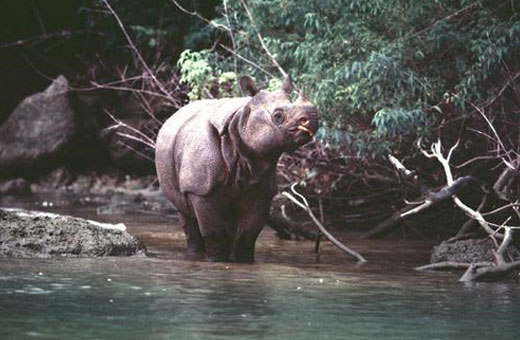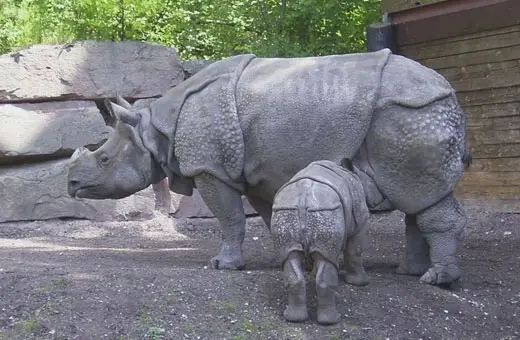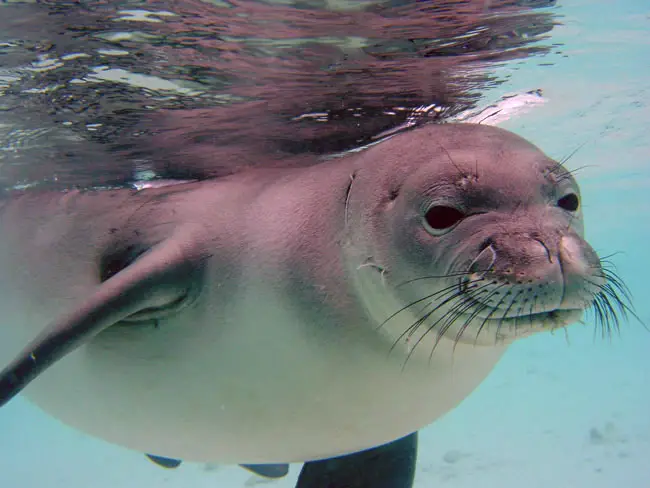Javan Rhinoceros
The Javan Rhinoceros is the rarest of all living rhino species today. Boasting a massive bulk and densely folded skin the Javan Rhinoceros population has decreased rapidly leaving only around 60 individual rhinos alive today, one group in Vietnam and the other in Java, Indonesia. The massive drop in population is down to a combination of habitat loss and poaching. Efforts have been made to save these rare rhinos but even though both groups are not located in conservation areas there is still a large threat from poaching and disease.

A Javan Rhino cooling down
The Javan Rhinoceros are believed to have once been common across south-east Asia until being forcefully pushed from their habitat by human activity. The preferred habitat of the Javan Rhinoceros is that of tall reeds and dense forests. The habitat of the Javan Rhinoceros needs to have a good supply of water and mud as like most rhinos the Javan Rhinoceros spends its days lazing in mud to keep cool. Salt Licks are also an essential commodity.
The Javan Rhinoceros is similar to but smaller than the Indian rhino and its dense skin folds give it a unique armored look. The Javan Rhinoceros is gray and hairless with a pointed upper lip that is used to grasp plant life and sports a large single horn, although it is common for females of the species to have a much smaller horn or no horn at all.

A female Javan Rhino with her calf
Although mostly solitary the Javan Rhinoceros can be found in groups at a plentiful water source or salt lick and spend most of their days resting in mud to keep cool. The diet of these rare rhinos is similar to that of most rhinos, comprising of fresh shoots, twigs and even various types of grass. Because the Javan Rhinoceros spend their days largely cooling off in mud their grazing period is usually at the twilight periods of the day.
When it comes to breeding the female matures slightly earlier coming into full sexual maturity at around 4 or 5 years of age. These uncommon rhinos reproduce at a slow rate which likely contributes to their porr population numbers, producing only 1 calf every 4 or 5 years.



I am only 8 years old and I want to see these when I am grown up, too. There should be lots of these around.
Hope you do